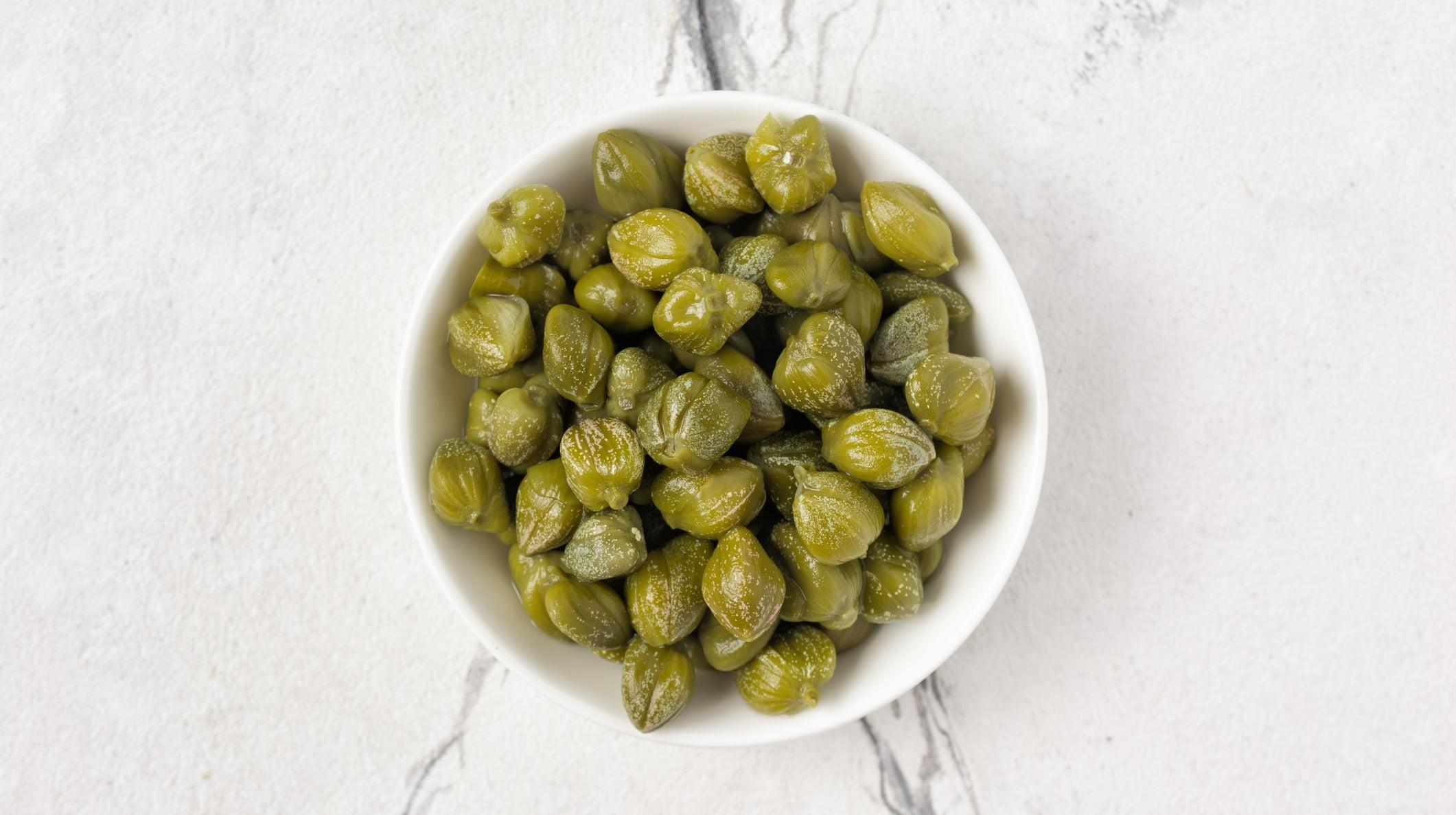What Are Capers?
An overview of capers, plus a few recipes that showcase their powers.
Capers are salty little flavor bombs that, when they find your fork, create a perfectly balanced bite that pops like fireworks. They're also the sort of food that we tend not to ask questions about, until one day, apropos of nothing, we suddenly realize we have no idea what capers are. Are they fruits? Vegetables? Something else entirely? It's the sort of question that causes a person to bolt out of bed in the middle of the night, grab their phone, Google "what are capers," and find themselves here. So let's answer this pressing question so you can get back to bed.
What are capers?
Capers are tiny flower buds that grow on the spiny, sprawling capparis spinosa bush, aka the caper bush. It grows in places where most plants can't: cliffs, rocky hillsides, sandy or gravelly soils, etc. These bushes can be found along the coast of the Mediterranean Sea, from the Middle East to the Himalayas, across the Pacific Islands, and in the outback of Northern Australia. If growing conditions are harsh, caper bushes find a way.
A brief history of capers
Historically, wherever soil is inhospitable to crops, people have needed to figure out how to make edible whatever grows in the area. (This includes foods that were once poisonous, like almonds!) Straight off the bush, capers are so painfully bitter, they're virtually inedible. But they won't kill you, which was a major plus for our early human ancestors. At some point, someone figured out that soaking capers in a heavily salted brine makes them stop being gross and start being awesome.
From there, capers got famous. They make an appearance in The Epic of Gilgamesh, written on clay tablets in Sumer around 2700 BC. They can be also found in the De materia medica, which confirmed capers were prized in Ancient Greece as both food and medicine, and in Apicius, an ancient Latin "cookbook" compiled in the first century AD.
Types of capers
Capers are sold in jars, either pickled in brine or cured in salt. Brined capers can be eaten directly out of the jar. Salted capers are unpalatable until their salt is rinsed off, and even then, they may need a short soak to draw out even more salt. After you rinse your capers, taste one. If too salty, put the capers in a bowl, cover with cold water, let sit for five minutes, then taste another one.
Capers are classified by size, with the smallest of them all being nonpareils. These capers are about 1/4" wide, and as they predominantly come from the south of France, you may see them sold as "French nonpareils." Nonpareil capers are small but mighty, with a delicate texture and intense, concentrated flavor.
Moving on up the caper ladder are surfines (7-8mm), capucines (8- 9mm), capotes (9-11mm), fines (11-13mm), and grusas (14+mm). Larger capers tend to be more acidic, since they're able to suck up more brine. All are delicious and can be used more or less interchangeably—just remember to taste your food for seasoning as you cook.
Capers vs. Caperberries
When capers aren't plucked in their infancy, they continue to grow into a plump, rotund caperberry, which is about the size of a small olive. Caperberries are usually harvested and brined with their (perfectly edible) stem attached, and have tiny seeds inside, like a kiwi. Though delicious, caperberries are not interchangeable with capers in recipes, as they have a milder flavor and softer texture.
How to use capers in your cooking
Anywhere you want to deepen the savory quality of your dish, capers will come in handy. Try these recipes:
Hodgepodge Pasta: This easy weeknight pantry pasta calls for either kalamata olives or capers, which will add a hit of both salt and acid to the finished dish. (Bonus: you don't have to remove a pit from capers.)
Stuffed Peppers: The richness of canned tuna and anchovy pairs naturally with briny capers and bright lemon juice in this satisfying appetizer.
Bagel Skins: You've heard of potato skins—now try bagel skins. These thin, sturdy bagel "cups" hold a filling made of cream cheese, potato, cured salmon, red onion, and, of course, capers. A bite-sized option when you don't have a bagel-sized appetite.
